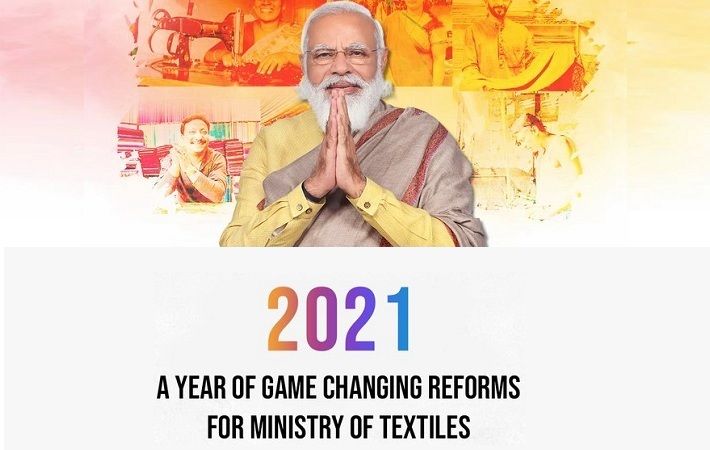
The government also launched a National Technical Textiles Mission (NTTM) and the SAMARTH (Skill Development & Capacity Building) programme targeting skill development of unemployed youth in the value chain of textiles and skill upgradation of weavers and artisans.
The MITRA parks have a total outlay of ₹4,445 crore for five years. The PLI scheme for textiles especially targets high-value man-made fibre (MMF) and technical textiles segments. Incentives worth ₹10,683 crore will be provided over five years for manufacturing notified products.
TUFS was a credit-linked subsidy scheme intended for modernisation and technology upgradation of the Indian textile industry. The Amended TUFS with an allocation of ₹5,151 crore has been implemented with a focus on facilitating and providing support to micro, small and medium enterprises (MSMEs).
Seventy one textile manufacturers, 10 industry associations, 13 state government agencies and four sectoral organisations have been brought on board under the SAMARTH scheme with an allocated target of 3.45 lakh beneficiaries, according to an official press release.
The Cotton Corporation of India could procure around 26 lakh bales under minimum support price operations this year and about 6 lakh cotton farmers were benefitted by disbursement of ₹7,600 crore.
The Jute-ICARE (Improved Cultivation and Advanced Retting Exercise) scheme was implemented for improvement of quality and yield of raw jute production. The Jute Raw Material Bank (JRMB) Scheme is for supplying jute raw materials at mill gate price to MSME jute diversified product units.
The ministry of textiles also approved this year the rationalisation and continuance of the Integrated Wool Development Programme (IWDP) from 2021-22 to 2025-26 with a total allocation of ₹126 Crore.
The domestic textile and apparel production is nearly $140 billion including $40 billion worth textiles and apparel export. The textile and apparel industry contributed 2 per cent in the overall gross domestic product (GDP) of the country in 2019 and 11 per cent to total manufacturing in gross value added (GVA). Women form 70 per cent of the workforce in garment manufacturing and about 73 per cent in the handloom industry.
Click here to read the release from the Ministry of Textiles
Fibre2Fashion News Desk (DS)